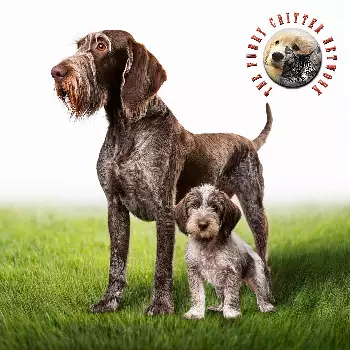The Italian Wirehaired Pointing Dog boasts one of the most ancient and storied histories among European sporting breeds, with origins that can be traced back over two millennia. Archaeological evidence and historical documents suggest that dogs resembling the modern Italian Wirehaired Pointing Dog were present in the Italian peninsula as early as 500 BC. These early ancestors likely descended from coarse-haired hunting dogs brought to Italy by Greek traders during the height of the Roman Empire, where they were subsequently crossbred with local Italian dogs to create the foundation for what would become this distinctive breed.
During the Renaissance period, the breed gained significant prominence among Italian nobility, particularly in the Piedmont region of northwestern Italy, which is considered the breed's true homeland. Renaissance artwork, including a famous fresco painted by Andrea Mantegna around 1470 in the Ducal Palace of Mantua, depicts dogs bearing a striking resemblance to the modern Italian Wirehaired Pointing Dog. This artistic documentation provides valuable evidence of the breed's consistent type and its esteemed position in Italian society during this cultural golden age.
The breed's name derives from the Italian word "spino," referring to the thorny brambles and undergrowth where these hardy dogs excelled at hunting. Their thick, wiry coats allowed them to penetrate dense, thorny vegetation that would deter other hunting dogs, making them invaluable partners for Italian hunters pursuing game birds in challenging terrain. This specialized ability earned them recognition as the ideal dog for hunting in the Italian countryside, where thorny underbrush provided natural cover for game birds.
The 19th century marked both triumph and near-disaster for the Italian Wirehaired Pointing Dog. While the breed was officially recognized and standardized during this period, the massive importation of English Pointers and Setters posed a significant threat to the breed's survival. Many Italian hunters, attracted by the speed and style of these English breeds, abandoned their traditional Italian dogs. Additionally, some breeders attempted to "improve" their dogs by crossing them with English breeds, which diluted the breed's distinctive characteristics and threatened its genetic integrity.
The two World Wars nearly brought the breed to extinction. During World War I and especially World War II, breeding programs were severely disrupted, and many established bloodlines were lost. However, the breed found new purpose during World War II when Italian partisans utilized these intelligent and loyal dogs for carrying messages and tracking enemies through difficult terrain. This wartime service demonstrated the breed's versatility and loyalty beyond hunting applications.
The breed's resurrection began in earnest after World War II, when a dedicated group of Italian enthusiasts formed breed societies to preserve and restore the Italian Wirehaired Pointing Dog. The Famiglia dello Spinone, established in 1949, and later the Club Italiano Spinoni in 1973, worked tirelessly to rebuild the breed from the small number of surviving dogs. These organizations implemented strict breeding programs and worked to reestablish the breed's numbers while maintaining its distinctive characteristics and working abilities.
International recognition came gradually, with the Fédération Cynologique Internationale officially accepting the breed in 1955. The breed's introduction to North America began in the 1980s, with the first dogs arriving in the United States in 1987. The American Kennel Club granted full recognition in 2000, placing the breed in the Sporting Group. Today, while still considered a relatively rare breed outside of Italy, the Italian Wirehaired Pointing Dog has gained a devoted following among hunters and dog enthusiasts who appreciate its unique combination of hunting ability, gentle temperament, and distinctive appearance.

